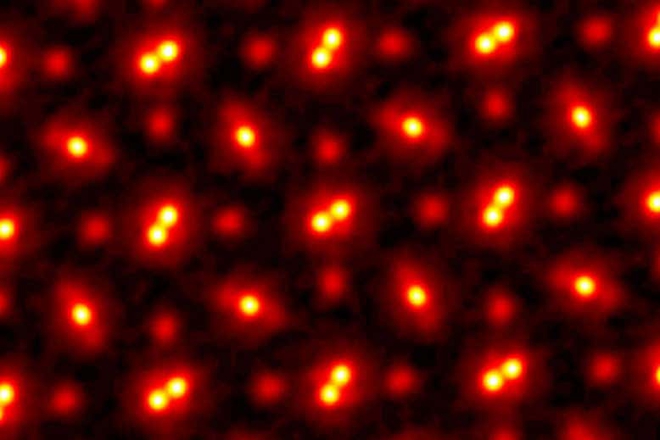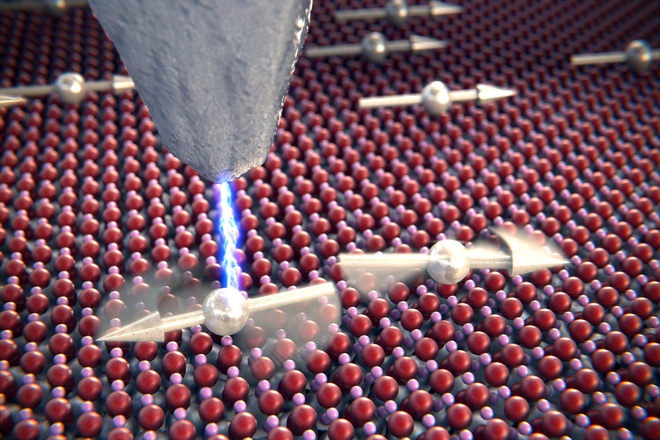For the first time, scientists hear two atoms “talking” to each other
- Tram Ho
Quantum computing is still at the threshold of its potential, and all around it, there are still many theories that need to be explored by scientists. One of the fundamental theories for quantum computers is quantum entanglement.
This entanglement means that the direction of rotation of an independent atom will have a direct effect on the other, and this would theoretically be true even if they are very far apart. If the theory can be reproduced, scientists can fine-tune the quantum computer system and monitor how quantum mechanisms work.

In a remarkable experiment, researchers were able to isolate a single pair of two titanium atoms and monitor their interactions by applying an electric current to an atom to reverse its direction of rotation. and then measure the remaining atom’s response at a distance of just a few nanometers. This distance is close enough for these two elementary particles to interact, but far enough for the team’s instruments to be able to interact between them.
” The main finding of this study is that we can track how atoms rotate over time due to their common interactions, ” said quantum physicist Sander Otte, co-author of the study. According to Otte, researchers have previously been able to measure the strength in the rotation of different atoms and the effect that strength has on the energy levels of the atom. But this experiment is the first time that researchers have been able to track that interaction over time.
The researchers chose titanium atoms because they have the fewest possible rotation directions – only up or down. Titanium atoms can also be trapped on a magnesium oxide surface at a temperature of 1 o K (minus 272 o C) so that researchers can observe them under a scanning tunneling microscope. microscope). To reverse the rotation of an atom in this pair, an electrical pulse is applied to it and immediately a similar reaction occurs on the other atom.
This is like when you knock on the door, someone inside will ask, “Who’s calling?” — in other words, it’s like atoms can talk to each other. This whole process takes place in about 15 nanoseconds, or 15 billionths of a second.
Scientists have used a variety of methods to peer into this mysterious quantum world in the past, but the interactions between them are often so fast that conventional methods, such as rotational resonance techniques, do not. can keep up with it. With the new tracking method, scientists are able to track and observe important phenomena in this quantum world for the first time.

But according to Otte, the real magic of this research is yet to come. Even if this experiment detects rotational entanglement between two atoms, things get more and more complicated each time an atom is added to the equation.
” If we increase it to 20 spinning atoms, my laptop won’t be able to calculate what happened. And with 50 spinning atoms, even the best supercomputer in the world has to give up and just like that. so .” Mr. Otto said.
” If we want to understand precisely how the complex behavior of particular materials comes about (superconductivity, for example), we have to “build” them from scratch. Start and see how the laws of physics work when going from 10 atoms to 100 or 1,000 “.
But these growing numbers are just the beginning of the end result. Instead of just hearing the ” heart beat ” of a single atom, scientists were eventually able to hear a ” whisper ” in the quantum conversation between many atoms as they flipped and rotated. But of course, to get there, we’ll need far more powerful computers than we do today.
Refer to Gizmodo
Source : Genk
